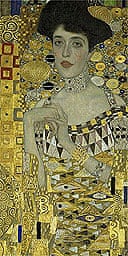In a landmark decision, a U.S. Appeals Court has ruled in favor of a Madrid museum, declaring it the rightful owner of a Nazi-looted Pissarro painting.
The disputed painting is a work by renowned Impressionist Camille Pissarro titled “Rue Saint-Honoré, Après-midi, Effet de Pluie,” which has been at the center of a protracted legal battle between the Thyssen-Bornemisza Museum in Madrid and the descendants of Lilly Cassirer Neubach, a German Jew who fled the Nazis in the 1930s.
The Cassirer family had long asserted that the Pissarro painting was unlawfully taken from them during the Nazi regime’s systematic looting of art from Jewish families. Lilly Cassirer Neubach was forced to sell the artwork in 1939 to secure her family’s escape from Nazi persecution. The family contended that the sale was made under duress and that they should be entitled to reclaim the painting.
The U.S. Appeals Court, however, rejected the Cassirer family’s claim, upholding a lower court’s decision that the Thyssen-Bornemisza Museum is the rightful owner of the Pissarro masterpiece. The court’s ruling rested on the argument that the museum had acquired the painting in good faith from Baron Hans-Heinrich Thyssen-Bornemisza, a Swiss art collector, in 1993.
The legal battle spanned decades, and the decision is expected to have far-reaching implications for similar restitution claims involving art looted during the Nazi era. The court’s ruling sheds light on the intricate legal terrain surrounding stolen art, particularly when it changes hands multiple times and involves multiple countries.
The Pissarro painting, created in 1897, is a poignant example of the broader issue of Nazi-looted art and the ongoing efforts to rectify historical wrongs. Lilly Cassirer’s family, like many other Jewish families, suffered immeasurable losses during the Holocaust, including the confiscation of their cultural heritage.
While the U.S. Appeals Court decision may bring closure to this specific case, it also reignites discussions about the ethical responsibility of museums and private collectors in possessing art with a troubled provenance. Museums around the world have faced increasing scrutiny over the years to reassess the origins of their collections and to address the restitution of artworks with questionable histories.

The decision also underscores the importance of international cooperation in resolving restitution claims. The U.S. Appeals Court’s ruling, although pertaining to a painting currently housed in Spain, is a testament to the interconnectedness of the global art market and the need for collaborative efforts in addressing historical injustices.
Advocates for the restitution of Nazi-looted art argue that the legal system should prioritize justice for the victims of looting over the rights of current possessors. They contend that returning artworks to their rightful owners or their descendants is not only a moral imperative but also a means of preserving the historical record and acknowledging the crimes committed during the Holocaust.
However, opponents of restitution often cite the complexities of tracing ownership histories and the legitimate acquisitions made by museums and collectors who may have no knowledge of a work’s illicit origins. Striking a balance between rectifying historical injustices and respecting the rights of current possessors remains a challenging and nuanced task for the legal system.
The Thyssen-Bornemisza Museum has expressed satisfaction with the U.S. Appeals Court’s decision, emphasizing its commitment to transparency and cooperation in addressing restitution claims. The museum has also highlighted its dedication to ethical art practices and the responsible stewardship of its collection.
As the legal battle over the Pissarro painting concludes, it is evident that the issue of Nazi-looted art restitution will continue to shape conversations within the art world and legal spheres. The case serves as a reminder of the ongoing need for diligence in provenance research, international collaboration, and a commitment to rectifying historical wrongs that have enduring implications for individuals and societies alike.

Contrasting verdict from the past
However, the verdict rendered by the U.S. court contradicts the reported restitution of the painting “The Women in Gold,” as documented by The Guardian. According to The Guardian, the aforementioned painting was returned to the family.
“The Women in Gold,” formally known as “Portrait of Adele Bloch-Bauer I” by Gustav Klimt, was painted in 1907 and became celebrated for its opulence. Adele Bloch-Bauer, the subject, was a prominent Viennese woman. During World War II, the painting, along with the Bloch-Bauer family’s art collection, was seized by the Nazis. After a legal battle led by Adele’s niece, Maria Altmann, the U.S. Supreme Court ruled in 2004 that the family had the right to reclaim the looted artworks. In 2006, the painting was returned to the Bloch-Bauer family and later sold to Ronald Lauder for $135 million. The case set a precedent for the restitution of Nazi-looted art and symbolized justice for affected families. Today, the painting resides in the Neue Galerie in New York.
